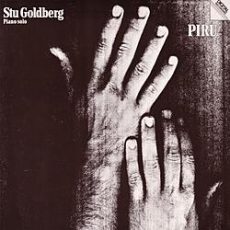
Daily Dose Of Jazz…
Stuart Wayne Goldberg was born on July 10, 1954 in Malden, Massachusetts but was raised in Seattle, Washington. He attended the University of Utah, taking his bachelor’s in music in 1974, then relocated to Los Angeles, California.
The following year Goldberg played with the Mahavishnu Orchestra and subsequently worked through the 1970s with Al Di Meola, Freddie Hubbard, Alphonse Mouzon, Michal Urbaniak, and Miroslav Vitous.
Booking a European tour in 1978 as a solo keyboardist, Stu released several albums under his own name and with Toto Blanke’s Electric Circus. Returning to Los Angeles in 1985 he worked extensively in film soundtracks with Lalo Schifrin and Ira Newborn. He also worked as a studio musician.
Keyboardist Stu Goldberg, who played with Ray Brown at the Monterey Jazz Festival in 1971, continues to perform and record.
More Posts: bandleader,history,instrumental,jazz,keyboard,music
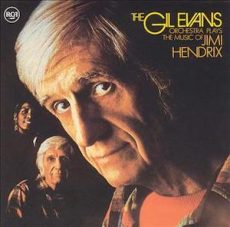
Daily Dose Of Jazz…
Sue Evans was born on July 7, 1951 in New York, New York and played piano, violin and clarinet as a young child before switching to drums. She studied under Warren Smith and Sonny Igoe, and graduated in 1969 from The High School of Music & Art. She went on to earn a BA in Music from Columbia University, as well as a Master of Music and Doctorate from the Juilliard School.
Becoming one of the top recording percussionists in New York she has recorded jingles, movie scores, and numerous albums with many jazz, folk and pop artists. She was Judy Collins’s touring drummer from 1969 to 1973 and worked with Gil Evans from 1969 to 1982. During the Seventies she worked with Steve Kuhn, Art Farmer, Bobby Jones, George Benson, Urbie Green, Yusef Lateef, Idris Muhammad, Lalo Schifrin, Jeremy Steig and Roswell Rudd’s Jazz Composers Orchestra. In addition Sue played with The New York Pops, the New York Philharmonic, the Brooklyn Philharmonic and the New Jersey Symphony Orchestra.
The 1980s saw her working with Michael Franks, Mark Murphy, Suzanne Vega, Tony Bennett, and Morgana King. Other associations include touring or recording with Aretha Franklin, Sting, Spike Lee, James Brown, Billy Cobham, Blood, Sweat & Tears, Philip Glass, Peter, Paul, and Mary, Don Sebesky, Sadao Watanabe, Hubert Laws, Randy Brecker, David Sanborn and Terence Blanchard.
For several years she played at the Tony Awards and the Grammy Awards. She won National Academy of Recording Arts and Sciences Most Valuable Awards in 1984, 1987 and 1989. Drummer and percussionist Sue Evans continues to perform and record.
More Posts: drums,history,instrumental,jazz,music,percussion
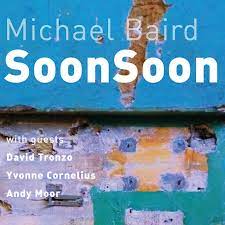
Daily Dose Of Jazz…
Michael Baird was born Lusaka, Zambia on July 5, 1954 and moved to the Netherlands at an early age, where he learned to play drums. Since the mid-1970s he has worked with several Dutch jazz groups and from 1975-83 he played and recorded with Gijs Hendriks, Slide Hampton, Kenny Drew, Raul Burnet, Sonny Grey, Siggi Kessler, Michel Herr, Michel Grailler, Joe Diorio, Jan Akkerman, Wim Overgaauw, Stan Tracey, and Kenny Wheeler.
He founded his own label SWP Records in 1986, led his group Sharp Wood for a decade beginning in 1986 and the octet Utrecht Deep Artment for two years. In 2000 he put together a quintet CapeAbility, followed by sextet Trendy 3D Junk and by 2002 was performing solo concerts along with various other projects and composition commissions.
He has compiled and produced a 22 Cd series “Historical Recordings by Hugh Tracey” of African music from the 40s and 50s, made his own field recordings in Zambia, Zimbabwe, Lesotho and released both on SWP Records.
Drummer, percussionist and keyboardist Michael Baird continues to perform, record and push the boundaries of jazz.
More Posts: bandleader,drums,history,instrumental,jazz,keyboards,music,percussion
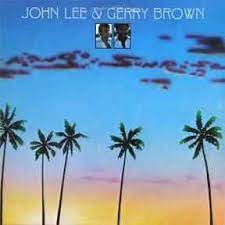
Daily Dose Of Jazz…
John Lee was born June 28, 1952, in Boston, Massachusetts. He is the son of a minister and a social worker. Growing up in Greenwich, Connecticut, Amityville, New York, and Philadelphia, Pennsylvania he began string bass lessons at 10 with Carolyn Lush. At Philadelphia’s Overbrook High School he met drummer Gerry Brown, who together studied at the Philadelphia Musical Academy for two years.
In 1971 Lee began performing with Carlos Garnett and Joe Henderson, and toured with Max Roach thru the spring of 1972 while still a student in Philadelphia. The same year he and Brown relocated to Europe with Den Haag, Holland as their base. Together they toured Europe and recorded in bands led by Chris Hinze, Charlie Mariano, Philip Catherine, Joachim Kühn, and Jasper Van’t Hof.
Moving to New York City in 1974, John played with Joe Henderson, Lonnie Liston Smith, and Norman Connors before joining The Eleventh House with Larry Coryell. The following year he and Gerry Brown signed a recording contract with Blue Note Records and formed a working band. In 1977 they moved over to Columbia Records and began producing records the same year.
From 1982 to 1984, Lee worked with McCoy Tyner, then became Dizzy Gillespie’s bassist, touring and recording with Dizzy’s Quintet, his Big Band, his Grammy winning United Nation Orchestra and the Back to the Future Band that Dizzy co-lead with Miriam Makeba until 1993 when Makeba died.
Lee has performed in over 100 countries around the world and has toured in the bands of Sonny Rollins, James Moody, Jimmy Heath, Pharoah Sanders, Jackie McLean, Gary Bartz, Hank Jones, Walter Davis Jr., Wolfgang Lackerschmid, Alphonse Mouzon, Claudio Roditi, Jon Faddis, Slide Hampton, Roy Hargrove, and Roberta Gambarini, as well as Aretha Franklin and Gregory Hines.
He is a founding member of The Fantasy Band with Chuck Loeb, Marion Meadows, and Dave Samuels. In 1996, at the bequest of Dizzy’s wife Lorraine Gillespie and the Dizzy Gillespie Estate, he became the director and bassist of the Dizzy Gillespie Alumni All-Stars as well as the Dizzy Gillespie All-Star Big Band, and the Dizzy Gillespie Afro-Cuban Experience. They have recorded five albums and toured extensively around the world.
In 2009 he co-founded the jazz recording label JLP (Jazz Legacy Productions), with partner Lisa Broderick. As a producer he has produced over 60 albums and CDs, and as a recording engineer he has recorded and mixed over 100 albums and CDs.
Bassist John Lee, who is a Grammy winning record producer and audio engineer, continues to explore the boundaries of music.
More Posts: audio engineer,bandleader,bass,history,instrumental,jazz,music,record producer
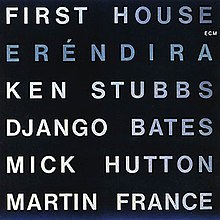
Daily Dose Of Jazz…
Mick Hutton was born on June 5, 1956 in Chester, United Kingdom. Making a name for himself in the British jazz scene, he worked with a number of musicians and groups including but not limited to Harry Beckett, Julian Argüelles, Iain Ballamy, Django Bates and Ken Stubbs of First House, the Chris Biscoe Sextet and Bill Bruford’s Band Earthworks.
A hand injury forced Mick to abandon the upright bass and he started working as bass guitarist, percussionist, and synthesizer player and as a composer. He works with his own band of saxophonist Andy Panayi, pianist Barry Green, and drummer Paul Robinson. With his quartet, including saxophonist Iain Ballamy, pianist Ross Stanley and drummer Paul Robinson, he frequently visits venues around the world.
Throughout his career Hutton has performed with Alan Barnes, Peter Erskine, Tina May, Jim Mullen, John Scofield, Alan Skidmore, Tommy Smith, John Taylor, Stan Tracey, and Kenny Wheeler. In 2002 he recorded on Robin Williamsons album Skirting the River Road, and the same year he played in a trio with Martin Speake and Paul Motian, recording Change of Heart.
Bassist, guitarist, percussionist and composer Mick Hutton, who also plays synthesizer, continues to perform and record.
More Posts: bass,composer,guitar,history,instrumental,jazz,music,percussion,synthesizer



